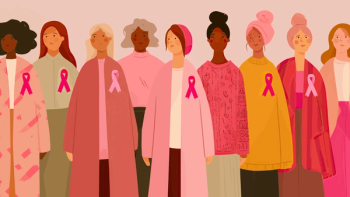
So You Want to Be a Cancer Advocate
Key Takeaways
- Cancer advocacy encompasses self-advocacy, research advocacy, and political advocacy, each offering unique opportunities for involvement.
- Self-advocacy involves advocating for personal care and quality of life, often requiring effective communication with healthcare providers.
An 11-year survivor of stage 4 breast cancer explains that everyone has a role to play.
It took a few years for me to embrace cancer advocacy as a part of my new life, but all it took was a little nudge from another patient to start exploring what opportunities might be out there. I quickly learned that there are different categories of cancer advocacy, and, as it turns out, some are better suited to me than others. If you have thought about how you might do more for your specific type of cancer or for cancer in general, welcome!
First, think about what you like to do now, what you would like to learn how to do, and don’t forget to dream big — what would you do if you could do anything to change the cancer picture? Chances are there are examples of patients doing those things and more all around you.
Next, learn a little bit about three overarching advocacy roles:
Self-Advocacy
Self-advocacy includes advocating for your own best care and quality of life. Sounds simple, right? But for a lot of us, this one remains a hurdle even when we are experienced with speaking on behalf of others. Learning how to speak up for yourself and interact with health care providers who may have goals that differ from your own is huge. For me, self-advocacy also involves public interest work, like what I am doing right now: sharing knowledge and ideas for making life better with cancer through my writing and through podcasts.
Research Advocacy
Research advocacy has expanded over the years. For metastatic breast cancer, some research advocacy entails fighting for more research and research funding. Research advocates also often work with research teams to provide the patient perspective; they may collaborate on scientific posters and publications or write their own opinion pieces. There are even research advocates conducting research.
Political Advocacy
Political advocacy is exactly what it sounds like: trying to effect change in the health care system through lobbying at the federal, state or local level. This might be an individual effort, such as having your town declare a day of recognition, or it may be part of a large organizational effort seeking to get national laws passed and funding increased. Breast cancer is fortunate to have numerous organizations that work to change the system. An example of this is Metavivor’s Stage IV Stampede, where patients visit congressional offices in an effort to increase support for important bills.
For me, the three advocacy umbrellas work together, and I suspect it is that way for most people who are active in cancer advocacy. We are often called on to tell a story, which is an effective way to communicate needs and show others — whether it’s your own doctor or a congressperson — where change is needed. Because I have been living with metastatic breast cancer for nearly 11 years now (far past the median of 3 to 5 years), I’ve met many people who use the time they’ve been given to give amazing things to others, from teaching a single person how important it is to talk about side effects to creating a nonprofit to being pivotal in dramatic treatment shifts. Big or small, advocates do them all (and they all matter!), so if you have an interest, reach out to an organization you like to find out how to get involved.
This piece reflects the author’s personal experience and perspective. For medical advice, please consult your health care provider.
For more news on cancer updates, research and education, don’t forget to




